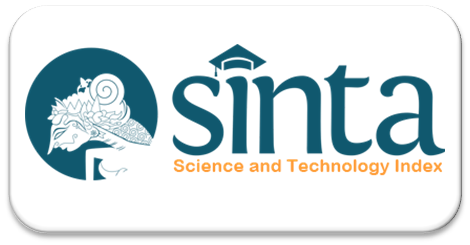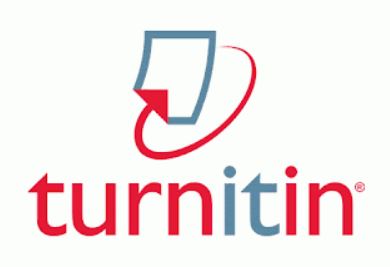Evaluating the Triple Elimination Screening Program for Pregnant Women in Rokan Hilir District, Indonesia
DOI:
https://doi.org/10.35960/vm.v17i1.1358Keywords:
Pregnant Women, problem solving, triple eliminationAbstract
The Triple Elimination program aims to prevent mother-to-child transmission of HIV, hepatitis B, and syphilis during pregnancy. This qualitative phenomenological study evaluated the implementation of the Triple Elimination program among pregnant women at the Rokan Hilir District Health Office in Indonesia. Five informants were purposively selected for in-depth interviews and document reviews. Data were analyzed using fishbone and SWOT analyses. Major barriers included limited knowledge and motivation among pregnant women due in part to inadequate midwife competencies in conducting screenings, insufficient health promotion infrastructure and activities, budget constraints, limited involvement of community stakeholders, and lack of supportive policies. Recommendations encompass enhancing midwife competencies, garnering policymaker support, optimizing community health cadres' roles, employing mobile health education strategies, and fostering partnerships through a Pentahelix approach. This streamlined abstract concisely summarizes the key aspects of the study including aims, methods, findings, and conclusions in clear language appropriate for an international audience
References
Barus, Darwita Juniwati, Marthalena Simamora, Jek Amidos Pardede, and Galvani Volta Simanjuntak. (2020). “Beban Keluarga Sebagai Caregiver Orang Dengan HIV/AIDS.” Jurnal Kesehatan 11(3):442. doi: 10.26630/jk.v11i3.2278.
Fatimah, Mei, Supriyadi Hari Respati, and Eti Poncorini Pamungkasari. (2020). “Determinants of Pregnant Women Participation on Triple Elimination of HIV, Syphilis, and Hepatitis B, in Semarang.” Journal of Health Promotion and Behavior 5(2):124–34. doi: 10.26911/thejhpb.2020.05.02.07.
Kemenkes RI. (2022). Profil Kesehatan Indonesia Tahun 2021. Jakarta: Kemenkes RI.
Koamesah, Sangguana Marthen Jacobus, Idawati Trisno, and Su Dji To Rante. (2021). “Relationship between Knowledge, Family Support, Frequency of Information, and Attitude Towards Triple Elimination Testing During COVID-19.” Lontar : Journal of Community Health 3(1):1–9. doi: 10.35508/ljch.v3i1.3821.
Linda Raniwati, Ernawati, Nurul Indah Sari, Dewi Erlina Asrita Sari, and Haryati Astuti. (2022). “Faktor-Faktor Yang Mempengaruhi Kinerja Kader Dalam Pelaksanaan Kegiatan Posyandu Di Wilayah Kerja Puskesmas Anak Air Kota Padang.” Jurnal Indonesia Kebidanan 6(2):106–17.
Permenkes RI. (2015). Profil Kesehatan Indonesia 2015. Indonesia.
Petralina, Bintang. (2020). “Determinan Tingkat Pengetahuan Ibu Hamil Tentang Pemeriksaan Triple Eliminasi.” Husada Mahakam: Jurnal Kesehatan 10(1):85. doi: 10.35963/hmjk.v10i1.217.
Rufaridah, A. (2019). “Pelaksanaan Antenatal Care (ANC) 14 T Pada Bidan Di Wilayah Kerja Puskesmas Lubuk Buaya Padang.” Jurnal Menara Ilmu 13(2):1–12.
Sari, S., and Anggeriani, R. (2022). Pemeriksaan Triple Elimination untuk Mencegah Penyakit Menular Seksual pada Ibu Hamil di Wilayah Kerja PKM Saboking-King Palembang. Jurnal Peduli Masyarakat, 4(4), 659–664.
Suhada, M. A., and Ain Ratu Q. (2021). “Pelaksanaan PKRS Di Rumah Sakit Berdasarkan Telaah Jurnal.” Muhammadiyah Public Health Journal 1(2):79–193.
WHO. (2021). Global Guidance on Criteria and Processes For Validation: Monitoring and Evaluation Elimination of Mother-To-Child Transmission of HIV, Syphilis and Hepatitis B Virus. Geneva: World Health Organization.
Zhang, Dan, Zhiyong Lin, Feinian Chen, and Shuzhuo Li. (2022). “What Could Interfere with a Good Night’s Sleep? The Risks of Social Isolation, Poor Physical and Psychological Health among Older Adults in China.” Research on Aging 44(7–8):519–30. doi: 10.1177/01640275211065103.
Downloads
Published
How to Cite
Issue
Section
License
Copyright (c) 2024 Riauni Syaputri, Budi Hartono, Azzah Rawani

This work is licensed under a Creative Commons Attribution 4.0 International License.
Submitted paper will be firstly reviewed by the editors to determine whether the paper meet the edition theme and submission guidelines. Papers which meet the theme and the guidelines will be assigned to selected reviewers for peer-reviews. Viva Medika: Jurnal Kesehatan, Kebidanan dan Keperawatan is a double blind peer-reviewed journal which involves reviewers based on their experties relevant to the topic of the paper. Final decision of paper acceptance is solely decided by the editors according to reviewers' comment.
Plagiarism and self-plagiarism are prohibited. Viva Medika: Jurnal Kesehatan, Kebidanan dan Keperawatan uses PlagiarismCheckerX and iThenticate to scan papers for detecting plagiarism. Thus, Appropriate citation and quotation should be used

.png)








